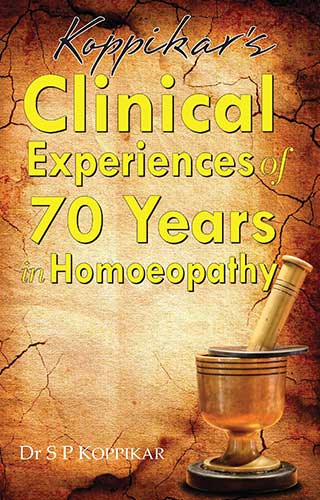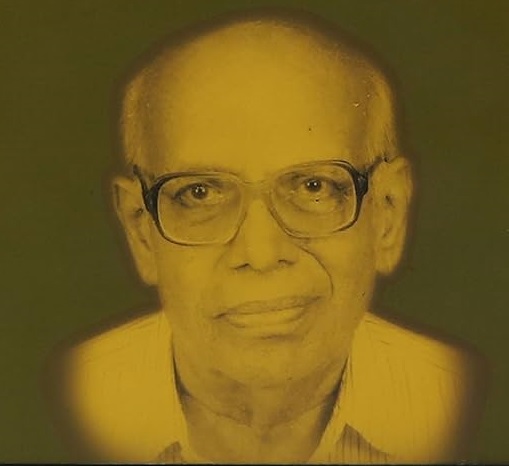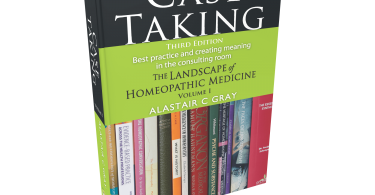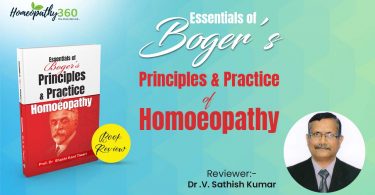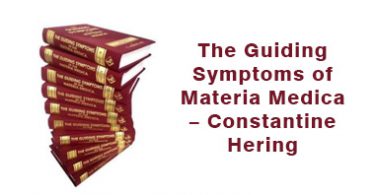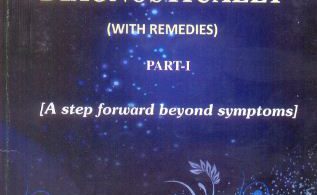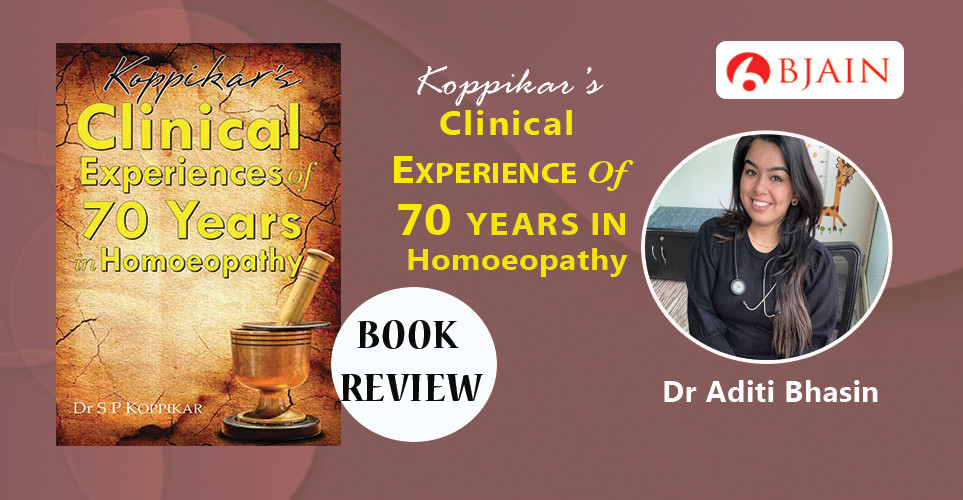
INTRODUCTION
❖ This is a masterpiece literary work that has a collection of experiences and thoughts in which he not only guides young homeopath having practical questions like “What would happen if patient took tea, coffee ,1 dose of aspirin’ but also to experienced homeopaths where he makes the reader
understanding the latest discoveries in medicine only confirms the wisdom of Hahnemann.
❖ The foreword of this book is given by another pioneer of homeopathy Dr. Jugal Kishor.
❖ The entire book contains all aspects of prescribing a homeopathic medicine and is divided in
eight sections after Introduction in Memories, History, Materia Medica, Repertory, Practice, Therapeutics, Research and Miscellaneous.
❖ In the initial few pages, he writes “Advice to Young Homeopath” as whenever we open a new clinic where few essential and practical aspects are highlighted by Dr Koppikar which are as follows –
i. A young Homeopath must have love for his work and liking for children as they are first to enter and should not be disturbed by their crying, noises and breaking things. ii. Also, he advises to be friends with other homeopaths to cultivate their friendship and never consider them as your competitors.
iii. He must have faith in fine and powerful medicines at his command of prescription “They work and do their duty well, always”
iv. Interesting Stories in a chapter Perceiving the Similia he shares the story of Eknath and establishes if one has an eye, the law of similia can be applied everywhere .
To anyone who is starting a fresh practice it is a gem ,a guide and no matter how we as a student we dislike reading extra books it is a true guide , a must read .
A. Section – Memories
∙ Author mentions an absorbing account of various renowned homeopaths who were his guiding light like Dr N.M. Choudhuri , Dr S, Sengupta ,Dr Hazra ,Dr R.N.Ghosh and many others. He not only tells about his teachers but also specifically mentions for the readers what he learnt from each of them like how he learns from Dr N.M Chaudhuri differentiation between Croton Tig and Aloes and other diarrhea remedies.
∙ He answered a very commonly asked question and was one of the questions that every student of homeopathy has in mind “how to study keynotes”- if you imagine yourself as a patient suffering from those symptoms complex and how to dramatize mentally and also gave various examples where and how he learned with Veratrum Album in vomiting with icy cold sweat, Secale Cor and podophyllum where loquacity during chills was marked in a malaria case.
B. Section – Materia Medica
His section of material medica answers every question that a young homeopath has in its mind. The following is a table of very interesting sub chapters and a gest about what he reveals in them.
| Name of Chapter | Summarization |
| I. How shall we study Materia Medica | It’s a talk of his journey as a student where he was spellbound by the library of Allen homeopathic College and he felt like Arjuna ( The Mahabharata Hero ) standing on the battlefield and letting Shri Krishna that he would not fight which not only reflect how much he relates with the experience of a student but also write about what one should do i.e. how a young homeopath should be choosy in selecting is books and their important chapters . |
| II. The study of Materia Medica | He suggested various books of Materia Medica like Dunham’s Materia Medica , Drug Picture by Margret Tyler ,Boger Synoptic Key and also guides his way of first reading Nash Lectures in Homeopathic Therapeutics both key notes and explanation and then how one should follow it by Allen Keynotes . |
| III. Application of Materia Medica | Young and experienced homeopaths collect knowledge from the same source but the fundamental difference in application entirely depends upon which school of thought they follow which are namely the Pathological School , The Keynote System school and the Constitutional School. In this chapter Dr Koppikar clears the doubt which prevails in the mind of every homeopath of which one to be followed for better application of this science . |
| IV. Developing individual Materia Medica | Though not using less known remedies does not prevent curing cases, it then takes a zigzag course which can be only improved by frequent reading, reflection and use of rare remedies and slowly they will become familiar and will help to travel the shortest distance towards cure . |
| V. Adventures of Materia Medica | He guides a young homeopath not to be a “Armchair Adventurer” who only is satisfied with the “Gist and Digest” materia medica and to put a constant effort towards exploration, experimentation and not let the spirit of adventure to find new and interesting homeopathy medicines die . |
| VI. Knowing the Remedies | Giving an example from daily life he elaborate once we meet a neighbor we my conveniently forget his name but if we meet him casually he might become our friend slowly we start knowing about his family relations and similar is case of our remedies, the more frequently read , encountered and prescribe them the better knowledge we will have about them . |
| VII. Usefulness of Remedies | Here Dr. Koppikar talks about three things that decide the usefulness of a remedy. First the familiarity with the drug, second type of a practice and lastly the seasonal and epidemic use and also presented a case of a boil to explain the details . |
| VIII. Unusual Remedies and their Hidden Values | He mentioned unusual uses of 6 well known remedies in his six different cases like Digitalis prescribed for jaundice ,Digitalis prescribed in prostate enlargement , Petroleum in Meniere’s disease |
| Petroleum in gastric ulcer ,use of Ammonium Mur and Sepia was prescribed when foetal movements were slowed down and became almost imperceptible. | |
| IX. Relationship of Remedies | He gave three elaborative sub chapters on the relationship of remedies which are explained from the definition to explanation of each relationship with various examples. He couldn’t have made it simpler. Third chapter also answers the question which comes to mind of every student while studying relationships- what makes two remedies become inimical to each other and how to avoid incompatible remedies . |
C. Section – Repertory
Question of every young homeopath is how to use the repertory is explained in an exceptional way. Dr Koppikar explains his journey along with masters like Dr J.N Hazra who was the foremost Indian student of Dr.H.A.Robert where he learnt card repertory and also advises Bidwell’s famous booklet- “How to use the Repertory” from which he took an exemplary case and not only told rubrics but also has justified how he arranged them, why he took those rubrics only and how he concluded to the remedy .It is a must read section as it will be a remarkable guide towards repertorisation in clinical practice.
D. Section – Miscellaneous
i. A part from very practical sections like Practice ,Therapeutics, Research which are a treasure of clinical skills in Homeopathy, section called Miscellaneous is likely to be missed .But it is a Box of Gems .Few of keys I found intriguing are as follows
ii. What if our patient takes a dose of aspirin or has tea, coffee ,spices ,onion or garlic will our remedies be of any benefit ? This is also answered in the chapter Ritualism in Homeopathy. iii. Today is the world of specialization and Dr Koppikar has given another chapter on specialization by homeopaths where he talks about how we should not suffer in silence but should officially accept specialization in some particular diseases or departments as the future of homeopathy.
iv. As we do not treat individual symptoms and we do not treat the diagnosis every homeopath should know what we are treating in a particular case is given in a chapter called “ Doctor, What are you going to treat” .
v. One while opening a clinic wonders what should be the professional fees and he has written it very elaborately as how you should decide what has to be your consultations charges in a chapter called Professional Fees .
Conclusion
In an article titled “ Of Studies” by Francis Bacon it is said some books are to be tasted, others to be swallowed and some few to be chewed and digested. In my opinion this book stands in the latter category.
The experience of reading this masterpiece is like an uncle we all find who is an experienced homeopath and wants us to guide from little basics to advance queries in our field .This book teaches young homeopaths the pen holding of homeopathy and while reading these you will feel Dr S.P.Koppikar is holding your hand and teaching you how to write each alphabet of homeopathy in early days of clinical practice .
Not to forget it is not only written interestingly with numerous examples but also a very easily understandable language as if an old experienced homeopath well learnt by various masters is sitting right beside you to teach you Homeopathic practice in today’s world.
References
P, K. Koppikar’s Clinical Experiences of 70 Years in Homoeopathy. B. Jain Publishers (P) Limited; 2019.
Title: Clinical Experiences Of 70 Years In Homoeopathy
Author: S P KOPPIKAR
ISBN: 9788131900772
Imprint: B. Jain Regular
Pages: 405
Format: Paperback
Language: English
Dr SP Koppikar, one of the renowned physicians of the world, and former president of Tamil Nadu Homoeopathy Medical council has written many articles and presented papers in national and international seminars. He is probably the most experienced homoeopath in India. He has been practicing since 1937 and his book is like a journey through his times. A large part of the book comprises of speeches that the author has delivered on various occasions and articles he has published in various journals.
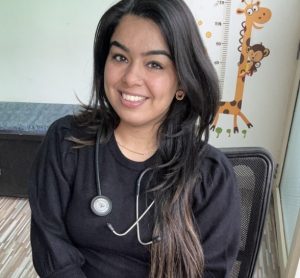
Dr Aditi Bhasin
MD (Hom.) Part -1, Batch 2021 – 2024 , PG Department of Practice Of Medicine , Bakson Homeopathic Medical College & Hospital ,Greater Noida , UP


